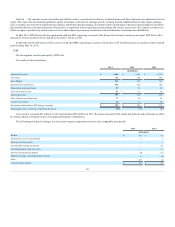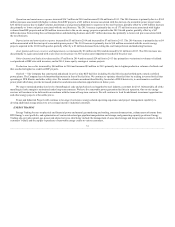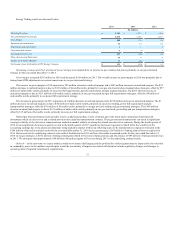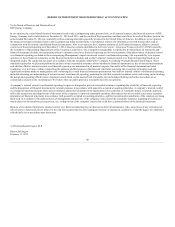DTE Energy 2014 Annual Report Download - page 40
Download and view the complete annual report
Please find page 40 of the 2014 DTE Energy annual report below. You can navigate through the pages in the report by either clicking on the pages listed below, or by using the keyword search tool below to find specific information within the annual report.
Fair value is defined as the price that would be received to sell an asset or paid to transfer a liability in an orderly transaction between market
participants at the measurement date in a principal or most advantageous market. Fair value is a market-based measurement that is determined based on
inputs, which refer broadly to assumptions that market participants use in pricing assets and liabilities. These inputs can be readily observable, market
corroborated or generally unobservable inputs. Management makes certain assumptions it believes that market participants would use in pricing assets and
liabilities, including assumptions about risk, and the risks inherent in the inputs to valuation techniques. Credit risk of the Company and our counterparties
is incorporated in the valuation of the assets and liabilities through the use of credit reserves, the impact of which was immaterial at December 31, 2014 and
2013. Management believes it uses valuation techniques that maximize the use of observable market-based inputs and minimize the use of unobservable
inputs.
The fair values we calculate for our derivatives may change significantly as inputs and assumptions are updated for new information. Actual cash
returns realized on our derivatives may be different from the results we estimate using models. As fair value calculations are estimates based largely on
commodity prices, we perform sensitivity analyses on the fair values of our forward contracts. See sensitivity analysis in Item 7A. Quantitative and
Qualitative Disclosures About Market Risk. See also the Fair Value section, herein.
See Notes 11 and 12 to the Consolidated Financial Statements in Item 8 of this Report, "Fair Value" and "Financial and Other Derivative Instruments".
We establish an allowance for doubtful accounts based on historical losses and management's assessment of existing economic conditions, customer
trends, and other factors. The allowance for doubtful accounts for our two utilities is calculated using the aging approach that utilizes rates developed in
reserve studies and applies these factors to past due receivable balances. We believe the allowance for doubtful accounts is based on reasonable estimates.
Goodwill
Certain of our reporting units have goodwill or allocated goodwill resulting from purchase business combinations. We perform an impairment test for
each of our reporting units with goodwill annually or whenever events or circumstances indicate that the value of goodwill may be impaired.
In performing Step 1 of the impairment test, we compare the fair value of the reporting unit to its carrying value including goodwill. If the carrying
value including goodwill were to exceed the fair value of a reporting unit, Step 2 of the test would be performed. Step 2 of the impairment test requires the
carrying value of goodwill to be reduced to its fair value, if lower, as of the test date.
For Step 1 of the test, we estimate the reporting unit's fair value using standard valuation techniques, including techniques which use estimates of
projected future results and cash flows to be generated by the reporting unit. Such techniques generally include a terminal value that utilizes an earnings
multiple approach, which incorporates the current market values of comparable entities. These cash flow valuations involve a number of estimates that
require broad assumptions and significant judgment by management regarding future performance. We also employ market-based valuation techniques to
test the reasonableness of the indications of value for the reporting units determined under the cash flow technique.
We performed our annual impairment test as of October 1, 2014 and determined that the estimated fair value of each reporting unit exceeded its carrying
value, and no impairment existed. As part of the annual impairment test, we also compared the aggregate fair value of our reporting units to our overall
market capitalization. The implied premium of the aggregate fair value over market capitalization is likely attributable to an acquisition control premium
(the price in excess of a stock's market price that investors typically pay to gain control of an entity). The results of the test and key estimates that were
incorporated are as follows.
38
























